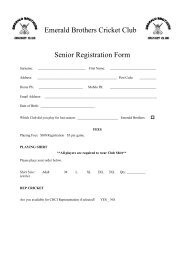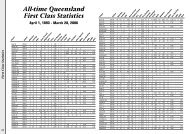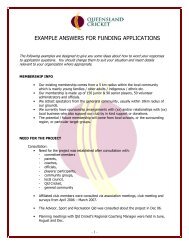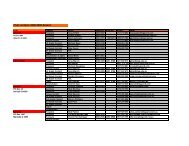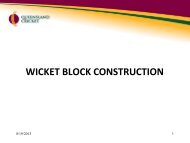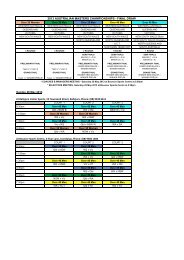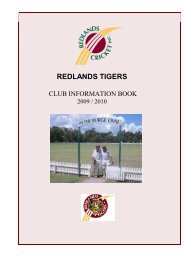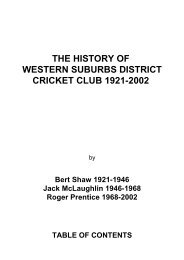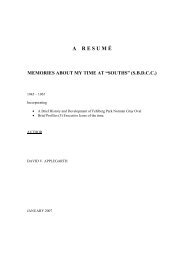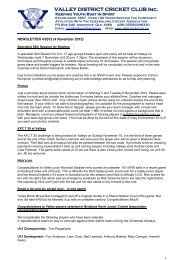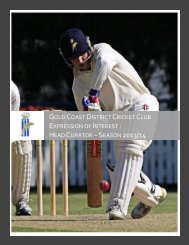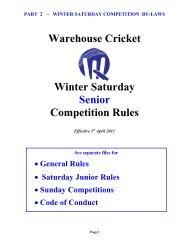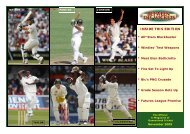QCSA Handbook on scoring 2010 - Queensland Cricket
QCSA Handbook on scoring 2010 - Queensland Cricket
QCSA Handbook on scoring 2010 - Queensland Cricket
- No tags were found...
Create successful ePaper yourself
Turn your PDF publications into a flip-book with our unique Google optimized e-Paper software.
SundriesWidesA wide is not counted as a ball faced by the batter or as a partnership ball.When a wide has been called, the <strong>on</strong>ly way a batter can be out is under Law33 (handled ball), Law 35 (hit wicket), Law 37 (obstructing the field), Law 38(run out) or Law 39 (stumped — the most comm<strong>on</strong> dismissal off a wide).ball.If a batter gets out off a wide ball, firstly record thepenalty wide in the sundry column, add 1 to thetotal score, and show the penalty wide in thebowler’s figures. Then you also have to show thewicket. This is not easy to record, but place the X (ifthe wicket should be credited to the bowler) closeto the W to denote the batter is out off that sameComplete the batter’s and partnership details as normal. It could be that thevery first ball the batter faces is called a wide and then the batter is outstumped. That batter is then out for 0 without facing a ball, but the teamtotal advances by 1 run.No ballsA no ball is counted as a ball faced by the batter and a partnership ball. Thismeans if the batter faced an entire over that c<strong>on</strong>tained a no ball, that batter’sballs faced will increase by seven. There are also some situati<strong>on</strong>s involving noballs that are rarely seen, but that an advanced scorer should be aware of.1. When a no ball is called by the umpire, who then also calls a bye orleg-bye, all runs go to no balls. So if the batters run 2 leg byes, 3runs are put in the No ball column and added tothe progressive score. It would be shown in thebowler’s column as L 2 in a circle, and 3 runs addedto the bowler’s progressive score (the circledenotes the 1 run penalty for the no ball). The byesand leg byes are <strong>on</strong>ly signalled to show that theruns are not to go to the batter (Law 24.13).2. If the ball bounces twice before reaching the batter, the umpire willcall no ball. If the ball then comes to a stop before reaching thebatter, the umpire will signal dead ball. Previously, the batter could<strong>Queensland</strong> <strong>Cricket</strong> Scorers Associati<strong>on</strong>57



